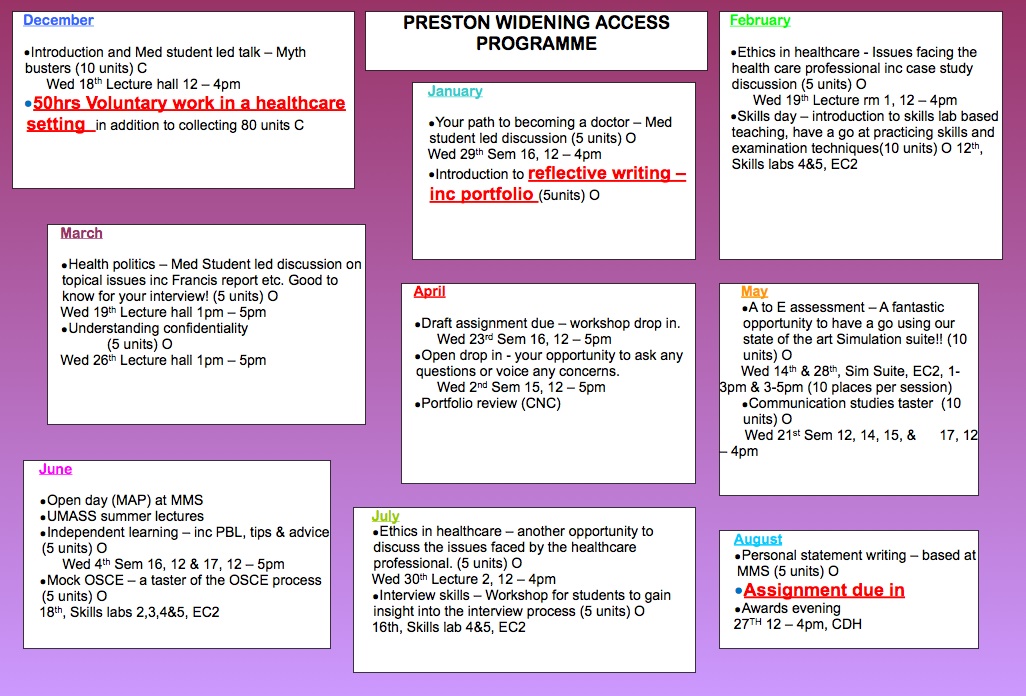



Theme
9JJ Admission to Medicine and Postgraduate Training Programmes
INSTITUTION
Pennine Acute Hospitals NHS Trust
Royal Preston Hospital
University of Manchester
Despite The University of Manchester's (UoM) good reputation in widening particpation, a new scheme was started this academic year in Preston. Lancashire Teaching Hospitals (LTHTR) provides undergraduate education to hundreds of students from Manchester Medical School (MMS) but there are few initiatives in Lancashire that encourage low participation groups in to medical education. Thus, the Preston Widening Access Programme (PWAP) was created, a novel partnership between MMS and LTHTR. Its main aim is to increase MMS student representation of those from low socio-economic backgrounds in the Lancashire area and this year was piloted in a local college in Preston, Cardinal Newman College.
Over a 9 month period students attend workshops that demonstrates specific knowledge and skills. These workshops occur bi-weekly at the LTHTR and are delivered by clinicians and medical students. The PWAP calender is shown in Figure 1.

Figure 1: PWAP Calendar
7 students took part in the pilot. PWAP scored an average of 4.9/5 for usefulness in preparing them for medical school (Graph 1).

Graph 1: Results when students were asked how usesful PWAP was in preparing them for medical school
Furthermore, attending workshops at the hospital and constant medical student involvement had helped them visualise themselves studying and working as medical students and doctors. This is demonstrated by the quotes below. Thus, all students felt more confident in applying to medical school this October.
We can speak to them about the course. It’s nice to have the medical students because they’ll have up to date knowledge about the interviews and what happens the first year and second year and how that works. Student 2
The environment, that atmosphere, just seeing people around in their uniform and things, it’s getting you into the mindset about the whole career in the medical field. So I think that was really good. Student 1
- All staff and medical students that have been involved with PWAP.
- All PWAP students for their hard work and dedication to the scheme.
 Send Email
Send Email